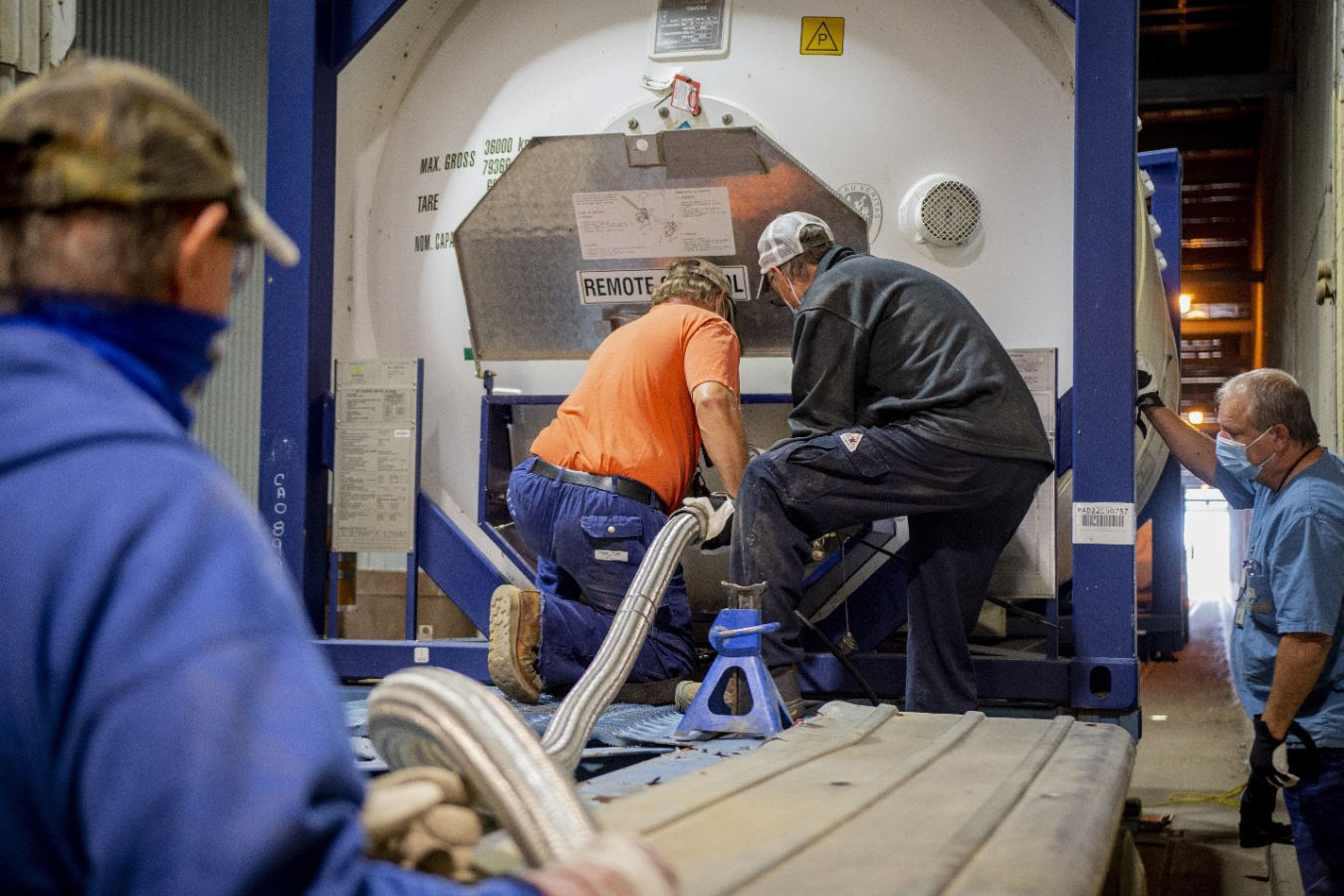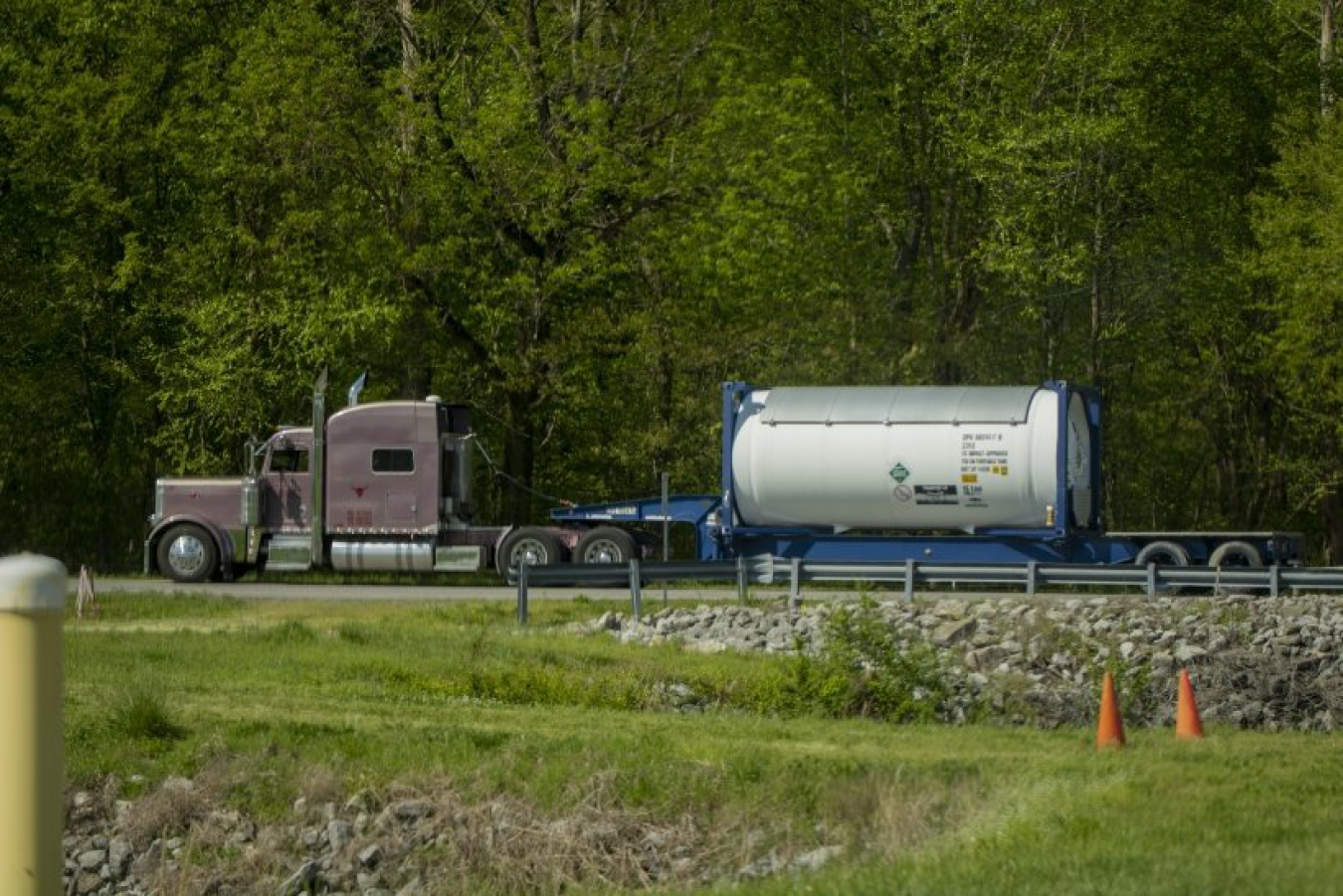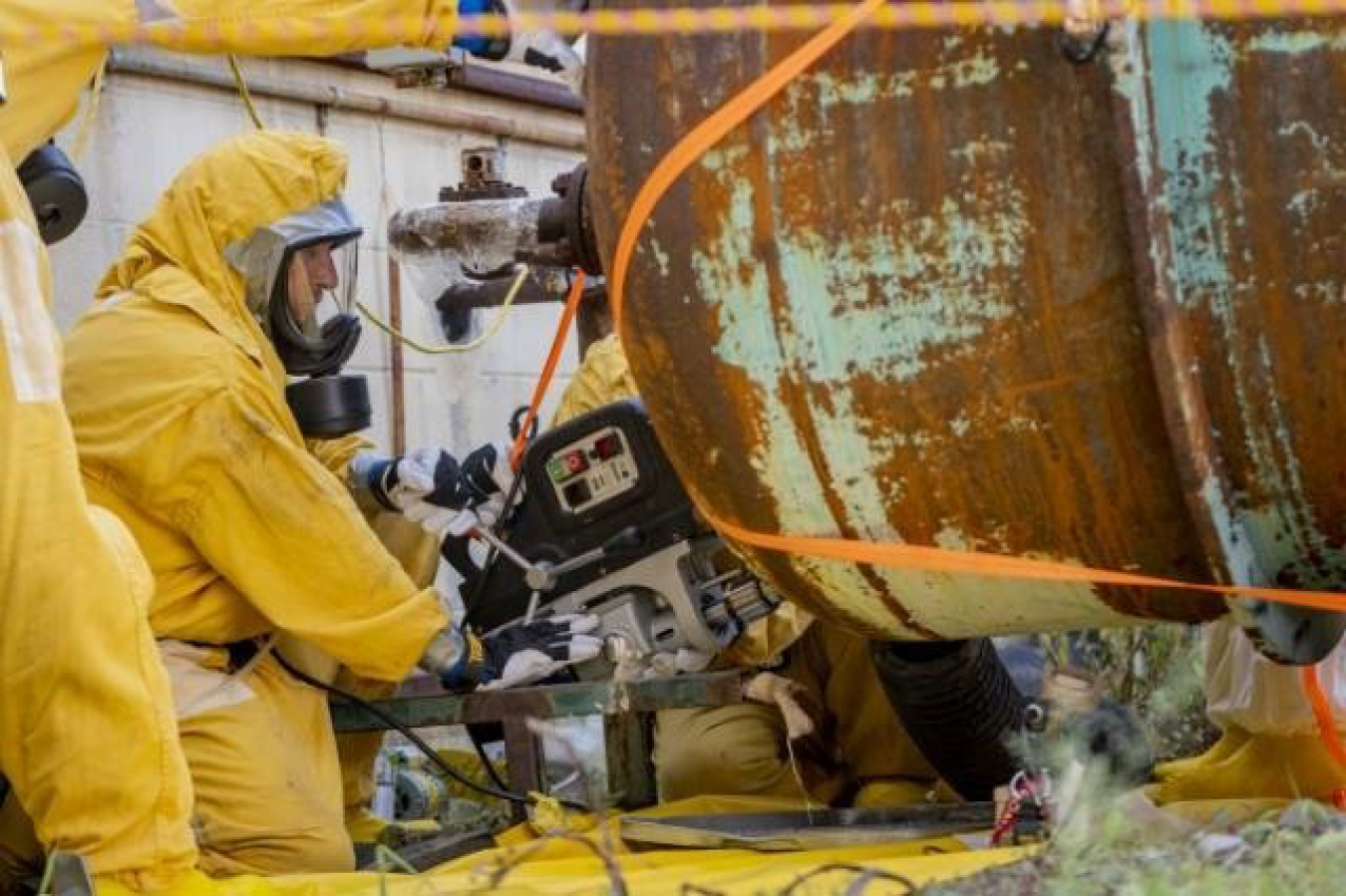Overview
In 1950, the Atomic Energy Commission (AEC), a predecessor agency to DOE, selected a 3,556-acre tract of government-owned land near Paducah, Kentucky, in McCracken County, as the location to construct a second Gaseous Diffusion Uranium Enrichment Plant (GDP) to support U.S. national security needs. The Paducah GDP enriched uranium from 1952 to 2013 and was the last government-owned uranium enrichment facility operating in the United States. The Paducah GDP produced low-enriched uranium originally as feedstock for nuclear weapons materials and later for commercial nuclear power plants.
Environmental cleanup of the Paducah GDP began in 1988 when groundwater contamination resulting from plant operations was discovered outside of the DOE property. Environmental cleanup includes remediation of groundwater, surface water, soil, lagoons, and burial grounds. All of the more than 500 facilities and buildings will be evaluated for removal and/or remediation, including four process buildings measuring more than 74 acres under roof.
The Paducah Site is also home to one of two DOE depleted uranium hexafluoride (DUF6) conversion plants. DUF6 was a byproduct from uranium enrichment operations at Oak Ridge, Tennessee; Portsmouth, Ohio; and Paducah, Kentucky. DOE is safely converting the DUF6 material from approximately 67,000 steel cylinders at the Portsmouth and Paducah sites to more stable and usable compounds. At Paducah, the DUF6 conversion facility began operation in 2011.

Calendar Year 2022 Accomplishments
- Completed disposition of 1 million pounds of hazardous refrigerant R-114 --- meeting an EM 2022 priority
- Completed construction of the Large Item Neutron Assay System facility
- Completed Southwest Plume Solid Waste Management Unit 211-A bioremediation field work
Key Regulatory Milestones 2023–2033
- Complete RI/FS for C-400 final remedial action — 2023
- Complete proposed plan for C-400 final remedial action — 2023

Planned Cleanup Scope 2023–2033
At Paducah, work over the next decade will continue to focus on remediating a trichloroethylene (TCE) groundwater contamination plume, along with activities to prepare the site’s former uranium enrichment process buildings for demolition.
In 2024, DOE anticipates issuing a ROD to identify the final remedial action for the C-400 Complex. The C-400 Complex includes the C-400 Cleaning Building, which utilized TCE for cleaning equipment. As part of the remediation of the C-400 Complex, DOE expects to begin fieldwork for C-400 Remedial Action at Paducah in 2025.
Over the next decade, DOE plans to complete deactivation work at the C-333 Process Building, one of the four large former enrichment process buildings at the site. These activities include hazard removal (including refrigerant, chemicals, fire hazards, etc.), characterization of the components within the facility, and other actions to prepare the C-333 Process Building for demolition. DOE is actively leveraging lessons learned from the work underway to deactivate and decommission former enrichment process buildings at the Portsmouth site to aid and improve activities at Paducah.
By 2027, Paducah is also expected to begin the regulatory documentation process to determine the waste disposal options associated with demolition of the process buildings and balance of plant cleanup activities.
At the DUF6 facility in Paducah, DOE plans to complete a major upgrade outage, resume steady state conversion operations, complete Integrated Control System upgrade modifications and re-line the Hydrogen Fluoride storage tanks. DOE will also complete shipments of railcars and continue progress on infrastructure upgrades supporting uranium oxide disposal.
Over the next 10 years, the plant expects approximately 73,500 metric tons of DUF6 material will be converted, and approximately 11 million gallons of hydrogen fluoride will be shipped off site for commercial use.

Post-2033 Cleanup Scope
Beyond 2033, site activities will include implementation of the selected remedy for waste disposal and continued demolition of the more than 500 site facilities. The remaining environmental cleanup activities related to groundwater, surface water, soils, lagoons, and burial grounds are expected to also be completed. DOE expects to complete disposition of DUF6 located at Paducah by 2057. DOE currently projects completing cleanup activities at Paducah in the 2065-2070 timeframe.
As future cleanup progresses, the planned Paducah end state is intended to allow the site to be used for light/heavy industrial purposes. This end state was developed in 2011 through a process conducted by the University of Kentucky that captured stakeholder input through a series of community meetings and integration of input from public, stakeholder, regulatory, and local community leaders. DOE continues to solicit and obtain stakeholder input through monthly meetings with the Paducah Citizens Advisory Board and community leaders.

